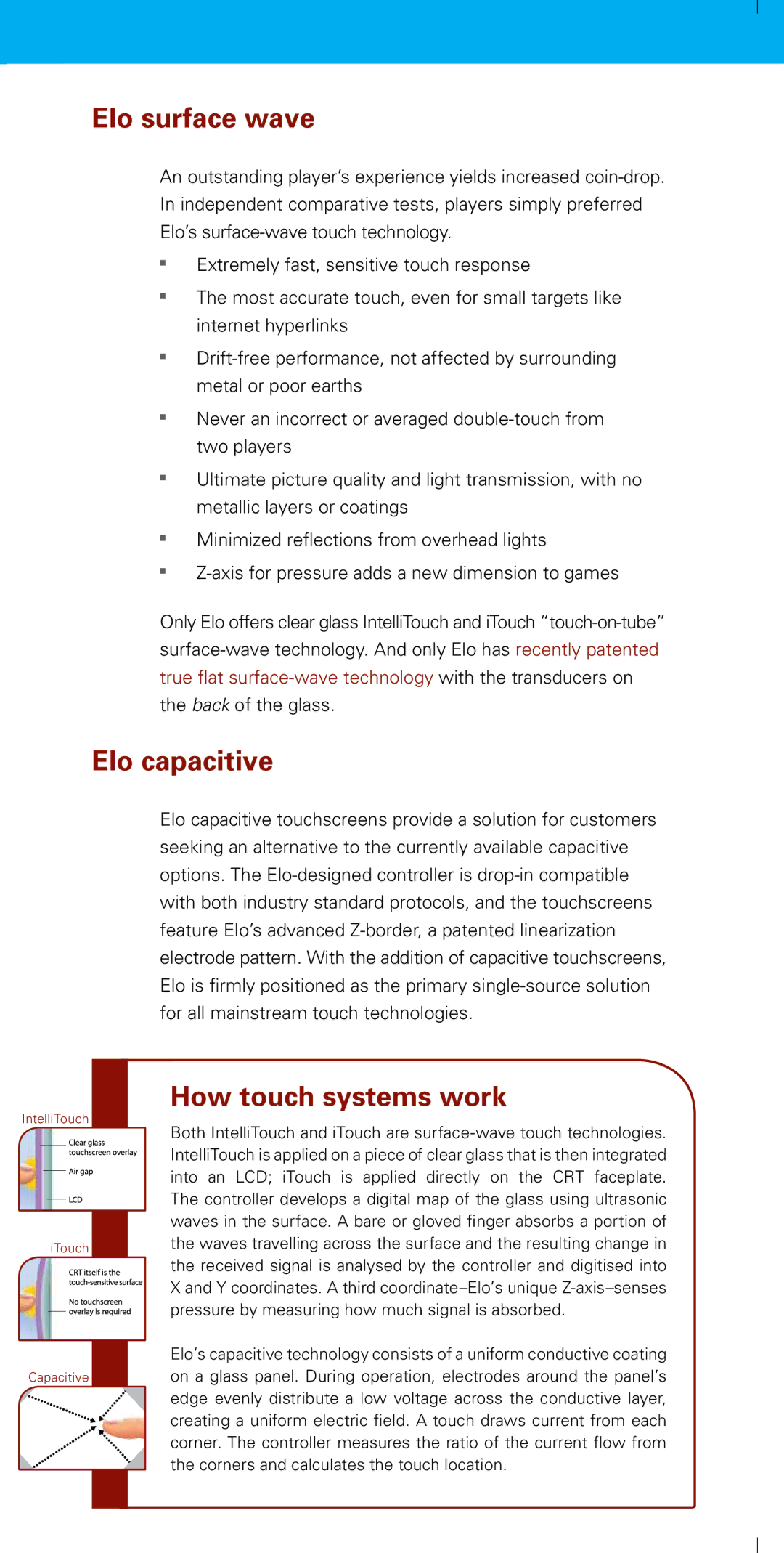
Elo surface wave
An outstanding player’s experience yields increased coin-drop. In independent comparative tests, players simply preferred Elo’s surface-wave touch technology.
Extremely fast, sensitive touch response
The most accurate touch, even for small targets like internet hyperlinks
Drift-free performance, not affected by surrounding metal or poor earths
Never an incorrect or averaged double-touch from two players
Ultimate picture quality and light transmission, with no metallic layers or coatings
Minimized reflections from overhead lights
Z-axis for pressure adds a new dimension to games
Only Elo offers clear glass IntelliTouch and iTouch “touch-on-tube” surface-wave technology. And only Elo has recently patented true flat surface-wave technology with the transducers on the back of the glass.
Elo capacitive
Elo capacitive touchscreens provide a solution for customers seeking an alternative to the currently available capacitive options. The Elo-designed controller is drop-in compatible with both industry standard protocols, and the touchscreens feature Elo’s advanced Z-border, a patented linearization electrode pattern. With the addition of capacitive touchscreens, Elo is firmly positioned as the primary single-source solution for all mainstream touch technologies.
How touch systems work
Both IntelliTouch and iTouch are surface-wave touch technologies. IntelliTouch is applied on a piece of clear glass that is then integrated into an LCD; iTouch is applied directly on the CRT faceplate. The controller develops a digital map of the glass using ultrasonic waves in the surface. A bare or gloved finger absorbs a portion of the waves travelling across the surface and the resulting change in the received signal is analysed by the controller and digitised into X and Y coordinates. A third coordinate–Elo’s unique Z-axis–senses pressure by measuring how much signal is absorbed.
| Elo’s capacitive technology consists of a uniform conductive coating |
Capacitive | on a glass panel. During operation, electrodes around the panel’s |
| edge evenly distribute a low voltage across the conductive layer, |
| creating a uniform electric field. A touch draws current from each |
| corner. The controller measures the ratio of the current flow from |
| the corners and calculates the touch location. |

